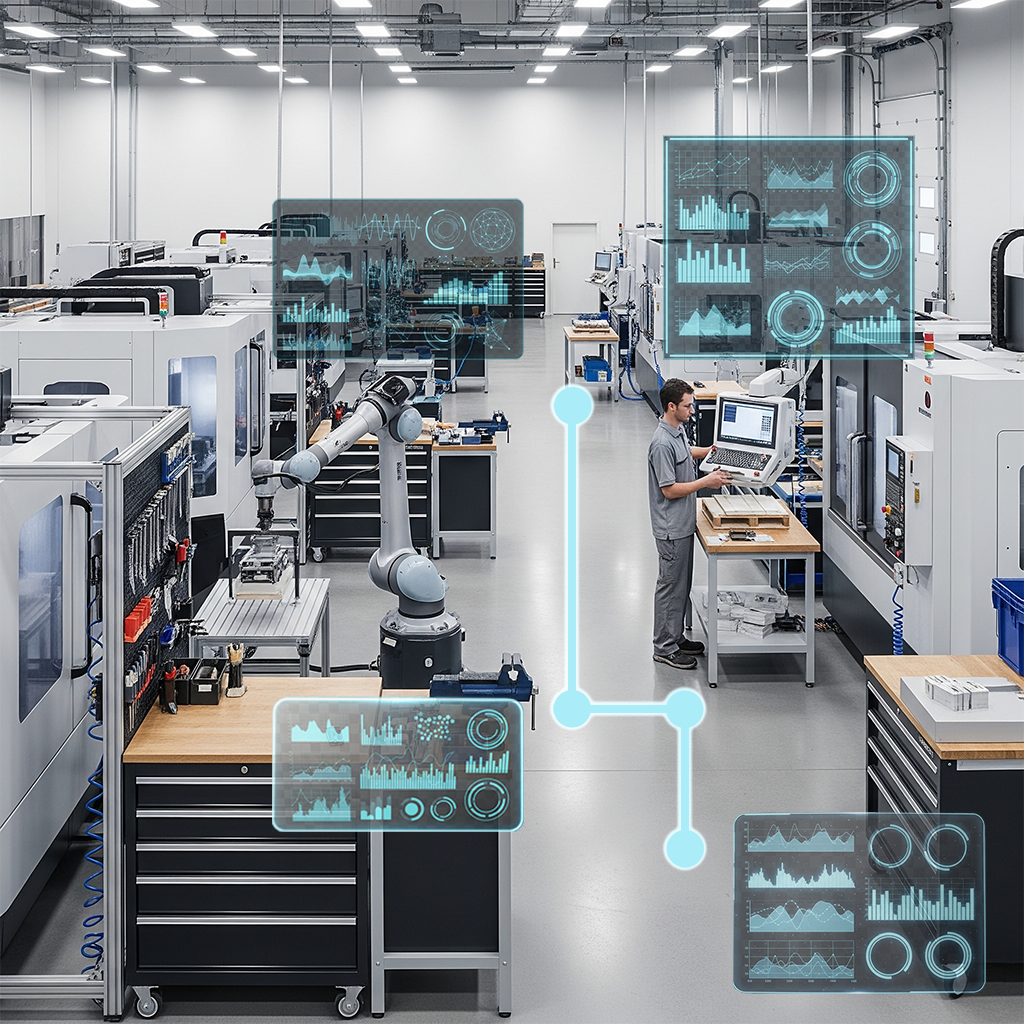The term job planning is often used interchangeably with process planning. The “job” refers to the specific task at hand—producing a single prototype, a small batch, or a large production run of a particular part. Planning the job means creating a detailed manufacturing blueprint.
Essentially, job planning answers the fundamental question: “How are we going to make this part correctly and efficiently?”
This critical task is the bedrock of MachiningCloud, guiding both its core philosophy and the development of every feature.
Here’s a breakdown of what job planning entails in a machine shop:
The Primary Goal
The main goal of job planning is to create a detailed, step-by-step manufacturing plan (often called a “router” or “traveler”) that ensures the final product meets all engineering specifications, including dimensions, tolerances, and surface finish, while minimizing time and cost.
Key Activities in Job Planning
A job planner, who is often an experienced machinist or manufacturing engineer, will perform the following activities:
Blueprint and Model Analysis: The planner starts by thoroughly reviewing the engineering drawing (blueprint) or 3D CAD model. They must understand the part’s geometry, required materials, specified tolerances, and any special notes from the designer.
Material Selection: They determine the exact type and size of the raw material stock needed for the job (e.g., a specific grade of aluminum bar stock of a certain diameter).
Sequencing of Operations: This is the core of the plan. The planner decides the logical order of manufacturing operations. For example, a typical sequence might be:
Cut raw material to length.
First operation (Op 10): Turn one side on a lathe.
Second operation (Op 20): Turn the other side on a lathe.
Third operation (Op 30): Mill the flats on a milling machine.
Fourth operation (Op 40): Drill and tap holes on a drill press.
Fifth operation (Op 50): Deburr and clean the part.
Sixth operation (Op 60): Send out for anodizing (surface treatment).
Seventh operation (Op 70): Final inspection.
Machine and Workstation Selection: For each operation, the planner selects the most appropriate machine tool (e.g., a CNC lathe vs. a manual mill) based on the required precision, features, and machine availability.
Tooling and Fixturing: The planner specifies all the necessary cutting tools (end mills, drills, inserts), tool holders, and work-holding devices (vises, chucks, custom fixtures) needed for each step.
Parameter Setting: The plan may include recommended machining parameters, such as cutting speeds, feed rates, and depth of cut, to ensure both quality and efficiency.
Quality Control Points: The planner determines at which stages the part must be inspected to ensure it stays within tolerance before more work is invested in it.
Time and Cost Estimation: A critical output is estimating the setup time and run time for each operation. This data is vital for quoting the job’s cost to the customer and for scheduling production on the shop floor.
The Output of Job Planning
The result of job planning is a set of documents that guides the entire production process:
Route Sheet (or Traveler): A master document that lists the sequence of all operations and the departments or work centers the job must pass through. This sheet physically “travels” with the batch of parts through the shop.
Operation Sheet (or Setup Sheet): A more detailed document for a single operation. It provides the machine operator with specific instructions on how to set up the machine, which tools to use, and what features to create and inspect.
How does MachiningCloud help?
Job planning is foundational for MachiningCloud and has remain integral to its development to this day.
One of the central features is the job; more specifically, it includes:
- Definition of the stock material, which in turn will help finding the proper tools;
- Machine selection;
- Defining Workholdings list;
- Defining Tool list;
- Setting Feeds and Speeds for each tool;
- Operations list, and assigning tools to each operation;
- Generating Job report that can be handed to the shopfloor, and which includes all the above; information;
- Exporting the job to a CAM or TMS via a data package that will include all the hereabove information and specifically formatted for the target software.
- Additionally, any relevant document to the job may be attached and will be saved and accessible within the job.
In summary, job planning is the strategic foundation of all work done in a machine shop. A well-executed job plan leads to consistent quality, on-time delivery, and profitability. A poor or non-existent plan often results in scrap parts, production delays, and financial loss.
By streamlining the most critical aspects of job planning, MachiningCloud has become an invaluable asset for countless shops. It simplifies tool selection and provides the accurate, manufacturer-verified data needed to boost efficiency and eliminate costly errors.
Ready to see the impact on your own workflow? We invite you to give it a try.




